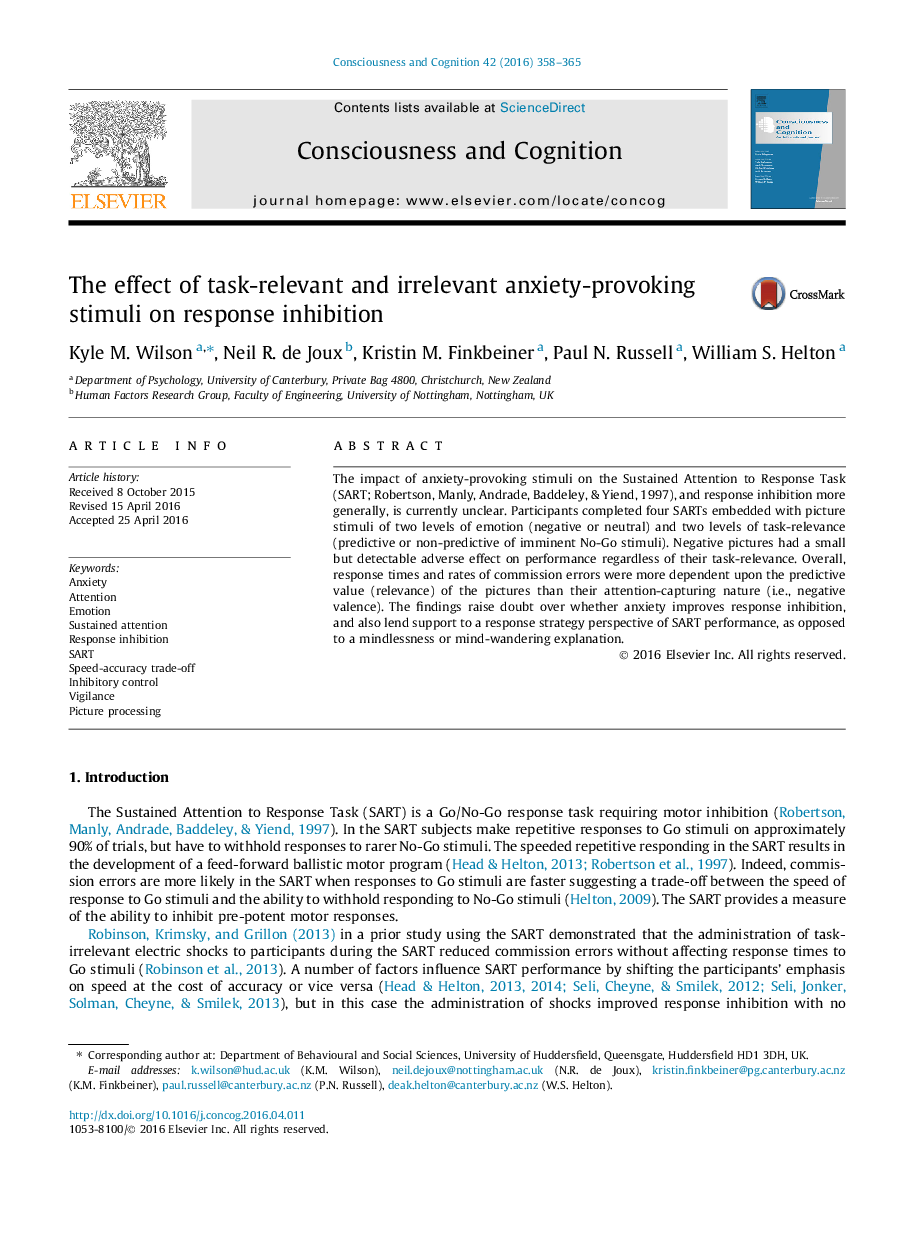| Article ID | Journal | Published Year | Pages | File Type |
|---|---|---|---|---|
| 7288581 | Consciousness and Cognition | 2016 | 8 Pages |
Abstract
The impact of anxiety-provoking stimuli on the Sustained Attention to Response Task (SART; Robertson, Manly, Andrade, Baddeley, & Yiend, 1997), and response inhibition more generally, is currently unclear. Participants completed four SARTs embedded with picture stimuli of two levels of emotion (negative or neutral) and two levels of task-relevance (predictive or non-predictive of imminent No-Go stimuli). Negative pictures had a small but detectable adverse effect on performance regardless of their task-relevance. Overall, response times and rates of commission errors were more dependent upon the predictive value (relevance) of the pictures than their attention-capturing nature (i.e., negative valence). The findings raise doubt over whether anxiety improves response inhibition, and also lend support to a response strategy perspective of SART performance, as opposed to a mindlessness or mind-wandering explanation.
Keywords
Related Topics
Life Sciences
Neuroscience
Cognitive Neuroscience
Authors
Kyle M. Wilson, Neil R. de Joux, Kristin M. Finkbeiner, Paul N. Russell, William S. Helton,
